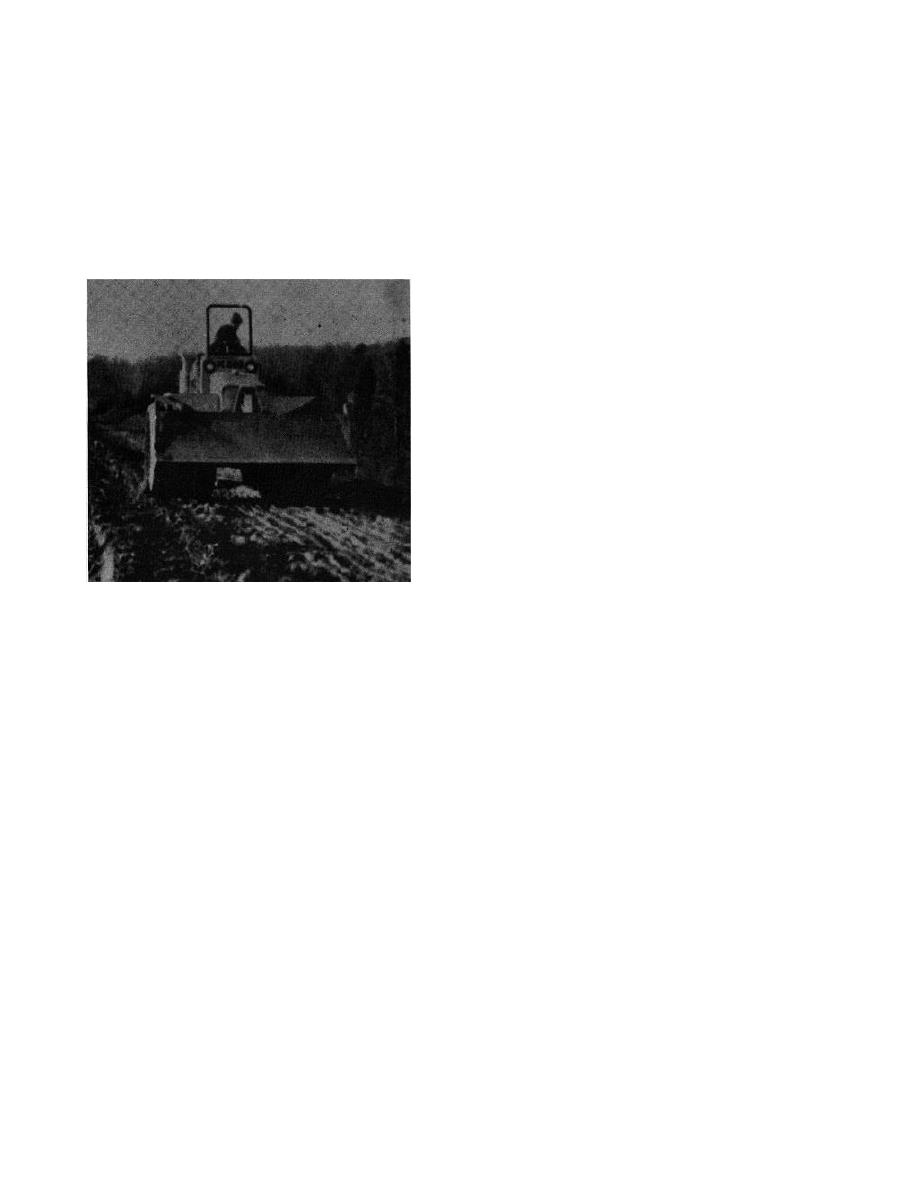 |
|||
|
|
|||
|
|
|||
| ||||||||||
|
|
 COMPACTION
Soil compaction equipment has developed from the
SOIL:
steam operated, smooth-wheel rollers of 19th century
The four basic types of soils with reference to compaction
France to the modern specialized equipment of today.
are gravel or rock fill, sand, silt and clay. Gravel and. sand
Compaction requirements have also progressed to
are non-cohesive soils with high permeability. The shear
complement modern technology.
Vehicles using
strength of cohesionless materials is essentially controlled
highways today may have six axles, 20,000 pound (9000
by five factors:
kg) axle loads and tire pressures of 150 psi (11 kg/ sq.
a) Mineralogical composition.
cm). Increases in airline traffic and capacities also
b) Size and gradation of the individual particles.
compounded the need for improved compaction
c) Shape of the individual particles.
procedures and stricter control.
d) Void ratio or dry density.
e) Confining pressure.
The shearing strength of a compacted cohesive soil is
primarily affected by:
a) water content.
b) gradation.
c) dry density.
d) soil structure.
MOISTURE CONTENT:
The most significant factor influencing the compaction of a
soil Is its moisture content. Optimum moisture content may
range any- where from 4% for rock fill to 24% for a clay,
depending upon soil type and specifications to be met. The
moisture requirement is reduced for the higher density
requirement of the Modified Proctor as compared to the
Standard Proctor.
MOISTURE CONTENT vs SOIL TYPE
There are three major purposes of compaction:
a) To Increase the potential strength and bearing
Sllty
capacity of the base. Studies have shown that the most
Sand
Important stress Induced by a load on a pavement
Sllty
and
foundation Is the shear, and not the compressive stress,
Clay
Sllt
Clay
Gravel
b) To Increase the volumetric stability and avoid
Standard Proctor
17%
14%
12%
10%
settling or localized compaction by future loads,
Modified Proctor
14%
11%
9%
7%
c) To minimize the permeability and prevent the
deterioration of strength due to Infiltration and saturation
Optimum moisture content Is that moisture at which the
of surface waters.
greatest density of a soil can be obtained through
Compactability depends upon:
compaction. A soil's optimum moisture content should be
a) The soil-preparation, type and moisture content.
determined by soil laboratory test using the selected Stan-
b) Compaction equipment-type and size.
dard or Modified Proctor test procedures. To produce best
c) Number and speed of passes.
field compaction results, experience has proven that when
d) Lift thickness.
Standard Proctor densities are to be achieved field
e) Foundation characteristics.
moistures should be at or slightly above optimum. Likewise
best results when compacting to Modified Proctor densities
may be achieved at or slightly below optimum. Care must
be exercised in controlling moisture, as too high a moisture
content will prevent
K300
Rev. 760501
300-1.1
|
|
Privacy Statement - Press Release - Copyright Information. - Contact Us |